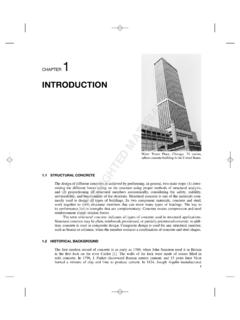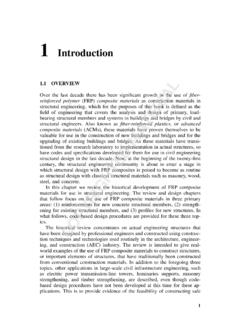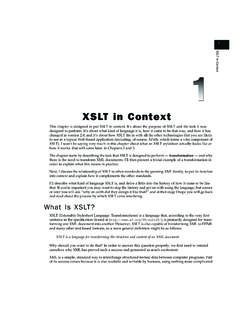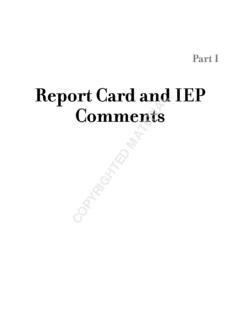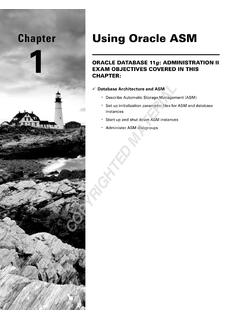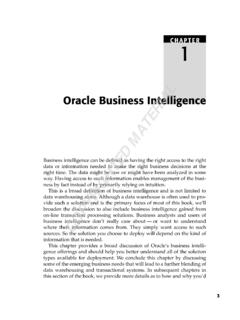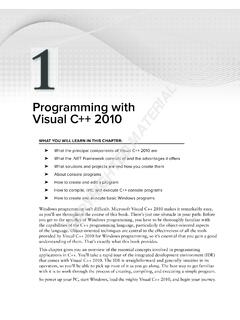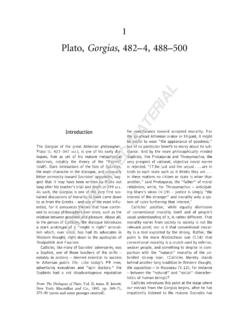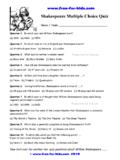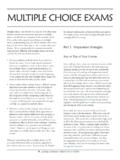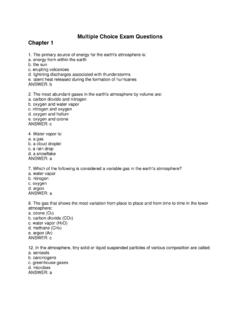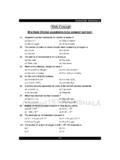Transcription of The AP Literature Exam Section I: Multiple-Choice Questions
1 8686-6 11/29/00 9:40 AM Page 23. The AP Literature Exam Section I: Multiple-Choice Questions Introduction The Multiple-Choice Section of the exam normally contains between fifty and sixty Questions on four different passages. One passage has at least fifteen Questions and is reused on a future AL. exam. Two of the passages are prose; two are poetry. Though the poems are usually complete works, the prose passages are likely to be taken from longer works such as novels or works of nonfiction. RI. TE. The four passages represent different periods of British and American Literature .
2 It is likely that one is chosen from the sixteenth or the early seventeenth century and one from the restoration or eighteenth century, unless these periods are represented by passages on the essay Section of MA. the test. The two other sections are from nineteenth- and twentieth-century writers. The exam as a whole is likely to include several works by female and minority writers. ED. You may, by extraordinarily good luck, find a passage on the exam that you've studied in your English class, but the odds are heavily against it. The passages chosen for the exam are almost always those that have not found their way into textbooks and anthologies.
3 Though your AP. HT. class should study shorter poems of poets like Shakespeare and Donne, and though a sonnet by one or the other may someday appear on the exam, it will not be one of the popular favorites IG. like My mistress' eyes are nothing like the sun or Death, be not proud. The passages are of- ten by writers you are familiar with, but the text is not likely to be familiar to you. To be pre- R. pared for the Multiple-Choice Section , you must be able to sight-read a reasonably complex PY. poem or passage of prose written in English within the last five centuries.
4 If your studies are limited to a narrow period the twentieth century, say you will be at a serious disadvan- tage on the Multiple-Choice Section of the exam. CO. The passages chosen for the exam are not easy. They must be complex enough to generate fifteen or so Multiple-Choice Questions that discriminate among the 200,000 students taking the exam. If the passages are too hard or too easy, they won't work. To answer the Multiple-Choice Questions , you don't need any special historical or philosophical knowledge. The passages are self-contained and self-explanatory.
5 If a particularly difficult word occurs that is crucial to the understanding of the passage, it is explained in a footnote. But the exam expects you to be familiar with the common terms of literary analysis and to have some familiarity with classical mythology and the more popular parts of the Old and New Testaments. Because so much of British and American Literature of the earlier periods is reli- gious, it is quite possible that a religious poem by a writer like George Herbert or Edward Taylor or Anne Bradstreet may be on the exam. But the examiners are eager to make sure that no one is given any special advantage, and if a religious text is used, it should be just as acces- sible to a nonbeliever as to an evangelical and to a modern Moslem or a Jew as to a Christian.
6 The Questions will always be on literary, not doctrinal, issues. 23. 8686-6 11/29/00 9:40 AM Page 24. Part II: Analysis of Exam Areas Be glad if you have a teacher who insists on spending weeks on seventeenth- or eighteenth- century works when you would rather be talking about Vonnegut or Stoppard. Unless you're comfortable with the unfamiliar vocabulary, syntax, and conventions of the Literature written before our time, you'll have trouble with the Multiple-Choice Section of the exam and possibly with two-thirds of the essay Section as well. Though it will be helpful if you practice Multiple-Choice exams before you take the exam in May, your first task is to learn to analyze a poem and a prose passage.
7 To practice your skills, you'll find the best exams are those published by the Advanced Placement Program of the College Board. The Multiple-Choice Section of some past Literature exams are available and can be ordered. Though several commercially published AP study guides contain sample multiple - choice exams , their Questions and choice of texts are often not sufficiently like those on the real exams to make them very useful. (The exams in this book, it goes without saying, are an excep- tion to this rule.). There is no quick and easy way to master the analysis of Literature .
8 If there were, you wouldn't need to spend four years in high-school English classes, and English teachers would be selling real estate or practicing law or be out of a job. The Advanced Placement Literature exam is test- ing all that you've learned about reading and writing English in junior and senior high school. But you can develop a method for approaching the literary texts you'll be asked to read on the AP exam. Analyzing Poems Some students have trouble with sight-reading poetry because they don't know where to start. They see the word death in the first line and tomb in the third and jump to the conclusion that this poem (which, in fact, is a sentimental lover's pitch to a woman who has turned him down) must be about mortality, and then spend the next ten minutes trying to make the poem fit these gloomy expectations.
9 To avoid premature conclusions, and to prepare yourself for the kind of Questions the multiple - choice Section asks, try going through each poem asking the following Questions in something like this order. 1. What is the dramatic situation? That is, who is the speaker (or who are the speakers)? Is the speaker a male or female? Where is he or she? When does this poem take place? What are the circumstances? Sometimes you'll be able to answer all the Questions : The speaker is a male psychopath living in a remote cottage, probably in Renaissance Italy, who has strangled his mistress and is sitting with her head propped upon his shoulder (Browning's Porphyria's Lover ).
10 Sometimes you'll be able to answer only a few, and sometimes only vaguely: The speaker is unnamed and unplaced and is speaking to an indeterminate audience. No matter. Already you've begun to understand the poem. 24. 8686-6 11/29/00 9:40 AM Page 25. The AP Literature Exam Section 1: Multiple-Choice Questions 2. What is the structure of the poem? That is, what are the parts of the poem and how are they related to each other? What gives the poem its coherence? What are the structural divisions of the poem? In analyzing the structure, your best aid is the punctuation.
